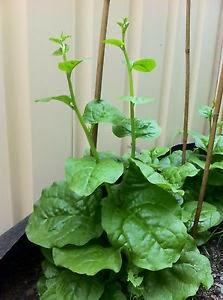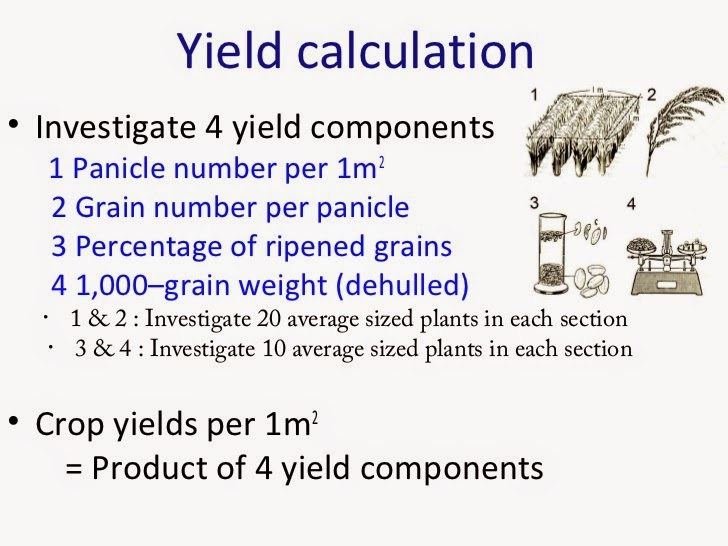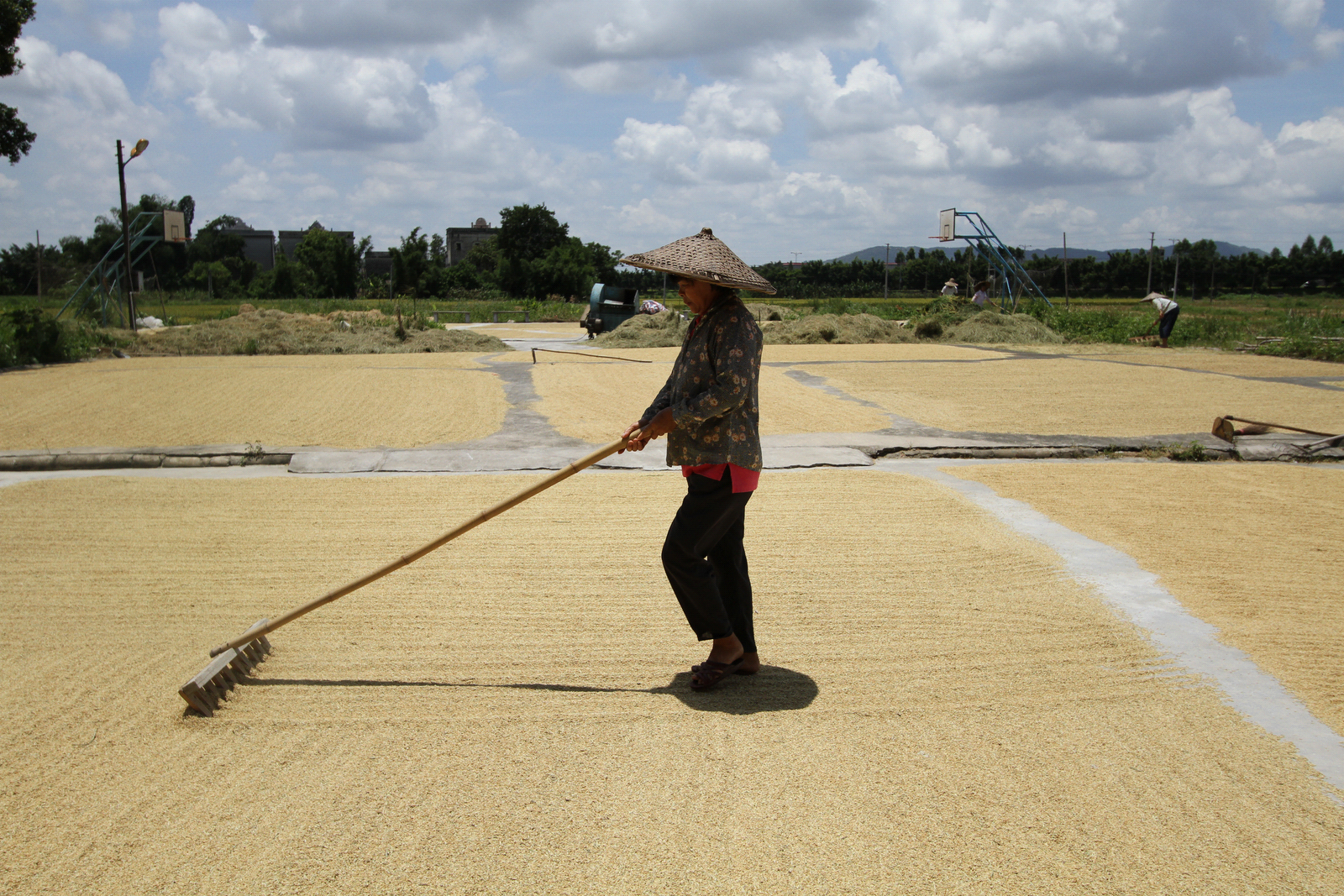 Soybean is an important crop because of its high nutritional qualities. Soybean has a high protein content of 40% by weight, 32% carbohydrate, 20% fat, 5% minerals and 3% fiber, and other trace substances. It is used as sources of protein in human food such as soymilk and tofu or soybean curd (taho and tokwa), soy sauce, animal feed and in industries. It is also used in industries as a source of edibleoil and the by-product of the oil extraction is the soybean cake used as animal feed. Based on the importance of this crop to human nutrition and industrial growth, there is the need to produce it in commercial quantity.
Soybean is an important crop because of its high nutritional qualities. Soybean has a high protein content of 40% by weight, 32% carbohydrate, 20% fat, 5% minerals and 3% fiber, and other trace substances. It is used as sources of protein in human food such as soymilk and tofu or soybean curd (taho and tokwa), soy sauce, animal feed and in industries. It is also used in industries as a source of edibleoil and the by-product of the oil extraction is the soybean cake used as animal feed. Based on the importance of this crop to human nutrition and industrial growth, there is the need to produce it in commercial quantity.
Why grow soybean?
– It is good for food—soy-milk, soy-cheese, tofu, tokwa,
– It is the source of an excellent vegetable oil,
– It is used in industry,
– It improves soil fertility and controls the parasitic weed,
– Soybean cake is an excellent livestock feed, especially for poultry,
– The haulms provide good feed for sheep and goats.
Soybean Cultural Requirements
Climate and Soil
Areas with productive rice or corn crop are usually suitable to soybean production. The best cropping system is to rotate the wet season cereal crop with soybean.
Plant soybean towards the end of the wet season so that harvesting will coincide with dry weather. High humidity brought by continuous rains when the crop is maturing will severely reduce the quality of the harvested seeds. If planted in the proper time and location, all recommended varieties would mature in less than 100 days.
Soybean thrives well in areas with abundant water supply. For rainfed crop production, choose the locations with Climate Types E, F, and G. In Surigao (Type E), soybean is planted after the monsoon season, sometimes as early as February. In South Cotabato (Type F), soybean is planted as early as August after the wet season. In both locations however, unexpected rain during harvest time may lower the quality of seeds.
In areas with pronounced wet and dry seasons such as Central Luzon, you need supplemental irrigation for successful production. In Cagayan Valley (Type D) though, rainfed production is viable after the wet season crop. Plant as soon as possible to benefit from occasional rains. The dry period usually sets in April.
Choose deep (>1 m) well-drained clay or silt loam soils. The soil pH should be near neutral (5.5 to 6.5) since this is the best condition for the nitrogen-fixing bacteria found in soybean root nodules to develop.
Land Preparation and Planting
Prepare the land well so seeds can germinate uniformly, establish rapidly and compete less from weeds. For uplands, pulverize the soil thoroughly. For post-rice cultures, practice zero or minimum tillage.
Drill the seeds along shallow furrows spaced 50 to 60 cm apart or dibble the seeds in 20 cm x 20 cm hills at the base of the rice stubbles. The best planting depth is 3 to 5 cm.
The seed requirement for one hectare is from 25 to 50 kilos, depending on the daylength and rainfall. In any case, plant 10 to 20 seeds per linear meter of furrow or 2 seeds per hill.
Wet the soil sufficiently so seeds can uniformly germinate. For post rice cultures, flood the paddy 1 to 2 days before planting. For rainfed upland areas, there should be rain within the next 7 days after planting.
Water Management
Areas with productive rice or corn crop are usually suitable to soybean production. The best cropping system is to rotate the wet season cereal crop with soybean.
Plant soybean towards the end of the wet season so that harvesting will coincide with dry weather. High humidity brought by continuous rains when the crop is maturing will severely reduce the quality of the harvested seeds. If planted in the proper time and location, all recommended varieties would mature in less than 100 days.
Soybean thrives well in areas with abundant water supply. For rainfed crop production, choose the locations with Climate Types E, F, and G. In Surigao (Type E), soybean is planted after the monsoon season, sometimes as early as February. In South Cotabato (Type F), soybean is planted as early as August after the wet season. In both locations however, unexpected rain during harvest time may lower the quality of seeds.
In areas with pronounced wet and dry seasons such as Central Luzon, you need supplemental irrigation for successful production. In Cagayan Valley (Type D) though, rainfed production is viable after the wet season crop. Plant as soon as possible to benefit from occasional rains. The dry period usually sets in April.
Choose deep (>1 m) well-drained clay or silt loam soils. The soil pH should be near neutral (5.5 to 6.5) since this is the best condition for the nitrogen-fixing bacteria found in soybean root nodules to develop.
Land Preparation and Planting
Prepare the land well so seeds can germinate uniformly, establish rapidly and compete less from weeds. For uplands, pulverize the soil thoroughly. For post-rice cultures, practice zero or minimum tillage.
Drill the seeds along shallow furrows spaced 50 to 60 cm apart or dibble the seeds in 20 cm x 20 cm hills at the base of the rice stubbles. The best planting depth is 3 to 5 cm.
The seed requirement for one hectare is from 25 to 50 kilos, depending on the daylength and rainfall. In any case, plant 10 to 20 seeds per linear meter of furrow or 2 seeds per hill.
Wet the soil sufficiently so seeds can uniformly germinate. For post rice cultures, flood the paddy 1 to 2 days before planting. For rainfed upland areas, there should be rain within the next 7 days after planting.
Water Management
.jpg) |
| Healthy soybean plants |
Soybean needs ample available water during the entire growing period (at least 500 mm). Residual moisture left over from the previous crop and occasional rains during the growing period are usually adequate. If necessary, irrigate heavily during the critical stages of growth such as at flowering, at pod formation, and at seed filling. We can obtain more than 3 tons of seeds per hectare in well-watered, fertile soils.
Nutrient Management
Since it is a legume, soybean obtains nitrogen through its symbiosis with the nitrogen-fixing bacteria in the roots. To take advantage of this natural system, apply the bacteria in the form of inoculant to the seed before planting. This inoculant can be obtained from the BIOTECH, UP Los Baños or the agriculture/” title=”View all articles about Department of Agriculture here”>Department of Agriculture outreach stations. Do not apply nitrogen fertilizers. Excessive nitrates from fertilizers will restrict nitrogen fixation.
Unless phosphorus and potassium are deficient in the soil, apply only the amount expected to be removed by the crop. A soybean crop yielding 2-3 t/ha takes up around 40 kg P2O5 and 60 kg K2O. If solophos or muriate of potash is not available, use the more common formulations such as 14-14-14. But the amount of nitrogen supplied should not exceed 30 kg/ha. Or, apply the fertilizers in the preceding rice or corn crop. The nitrogen will be used up by the cereal crop while the residual phosphates will still be available to the soybean crop.
In the case of micronutrients, apply only when necessary. Whenever possible, apply organic fertilizers.
Crop Protection
Insect pests. In the early vegetative stage, the bean fly is the most destructive insect pest. Once infestation sets in, insecticides cannot effectively control them. Compared to mungbean and cowpea, however, the soybean crop can recover from the initial damage. Provide the optimum cultural management for rapid vegetative growth.
Aphids also damage the young plants. They can also transmit deadly viruses. Insecticides however, can easily control infestation. Spray directly the aphid colonies.
During the vegetative stage, a number of larvae from Lepidopterous insects can defoliate the crop. Nevertheless, allow nature to control them. Soybean can tolerate occasional damage to ts leaves. If intervention is necessary, limit the choice of insecticide to Bt (Bacillus thuringiensis) formulations or highly specific insecticides. This will also help in controlling the infestation of pod borers during the reproductive stage. Pod borers, if widespread, can be very destructive and difficult to control.
From seed filling up to maturity, the stinkbugs suck the developing seeds. They are most prevalent among the later planted areas. Therefore, avoid late plantings in a given location.
Diseases. Soybean rust is the fungal disease prevalent during the cool, dry season. Severe infections during pod development usually result in considerably smaller seeds. On the other hand, purple seed stain is the fungal disease prevalent during periods of frequent rain. Severe infections during seed formation result in purple blotches of the seed coat. The recommended varieties have partial resistance to these diseases. However, use fungicides under heavy disease pressure.
Weeds. Soybean grows slowly for 2-3 weeks after emergence. Therefore, weed control is critical during this period. Before planting, prepare the land thoroughly. As soon as possible, cultivate the spaces between rows. Practice spot weeding. In areas where any of these methods are impractical, use chemical control. For zero or minimum tillage, apply a broad-spectrum herbicide before planting. In a well-prepared land, apply a pre-emergence herbicide. If necessary afterwards, spray post-emergence herbicides, depending on the type of weeds.
Harvesting and Processing
Nutrient Management
Since it is a legume, soybean obtains nitrogen through its symbiosis with the nitrogen-fixing bacteria in the roots. To take advantage of this natural system, apply the bacteria in the form of inoculant to the seed before planting. This inoculant can be obtained from the BIOTECH, UP Los Baños or the agriculture/” title=”View all articles about Department of Agriculture here”>Department of Agriculture outreach stations. Do not apply nitrogen fertilizers. Excessive nitrates from fertilizers will restrict nitrogen fixation.
Unless phosphorus and potassium are deficient in the soil, apply only the amount expected to be removed by the crop. A soybean crop yielding 2-3 t/ha takes up around 40 kg P2O5 and 60 kg K2O. If solophos or muriate of potash is not available, use the more common formulations such as 14-14-14. But the amount of nitrogen supplied should not exceed 30 kg/ha. Or, apply the fertilizers in the preceding rice or corn crop. The nitrogen will be used up by the cereal crop while the residual phosphates will still be available to the soybean crop.
In the case of micronutrients, apply only when necessary. Whenever possible, apply organic fertilizers.
Crop Protection
Insect pests. In the early vegetative stage, the bean fly is the most destructive insect pest. Once infestation sets in, insecticides cannot effectively control them. Compared to mungbean and cowpea, however, the soybean crop can recover from the initial damage. Provide the optimum cultural management for rapid vegetative growth.
Aphids also damage the young plants. They can also transmit deadly viruses. Insecticides however, can easily control infestation. Spray directly the aphid colonies.
During the vegetative stage, a number of larvae from Lepidopterous insects can defoliate the crop. Nevertheless, allow nature to control them. Soybean can tolerate occasional damage to ts leaves. If intervention is necessary, limit the choice of insecticide to Bt (Bacillus thuringiensis) formulations or highly specific insecticides. This will also help in controlling the infestation of pod borers during the reproductive stage. Pod borers, if widespread, can be very destructive and difficult to control.
From seed filling up to maturity, the stinkbugs suck the developing seeds. They are most prevalent among the later planted areas. Therefore, avoid late plantings in a given location.
Diseases. Soybean rust is the fungal disease prevalent during the cool, dry season. Severe infections during pod development usually result in considerably smaller seeds. On the other hand, purple seed stain is the fungal disease prevalent during periods of frequent rain. Severe infections during seed formation result in purple blotches of the seed coat. The recommended varieties have partial resistance to these diseases. However, use fungicides under heavy disease pressure.
Weeds. Soybean grows slowly for 2-3 weeks after emergence. Therefore, weed control is critical during this period. Before planting, prepare the land thoroughly. As soon as possible, cultivate the spaces between rows. Practice spot weeding. In areas where any of these methods are impractical, use chemical control. For zero or minimum tillage, apply a broad-spectrum herbicide before planting. In a well-prepared land, apply a pre-emergence herbicide. If necessary afterwards, spray post-emergence herbicides, depending on the type of weeds.
Harvesting and Processing
At maturity, soybean pods turn brown and start to lose moisture. Begin harvesting as soon as most of the leaves had shed and the pods are dry. Harvest early in the morning to minimize pod shattering. Harvesting of soybean is similar to rice. Cut the stalk at the base of the plant. Thresh manually or use a rice thresher but regulate the speed to minimize damage to seeds.
Clean and dry the seeds. For seeds intended for planting next season, dry to 9% moisture. While drying, do not expose these seeds to temperatures more than 43°C. Store the dried seeds in airtight containers. Stock these containers in a cool, dry place, protected from rodents. Practice good sanitation to prevent infestation of storage pest.
Costs and Returns of Soybean Production

Clean and dry the seeds. For seeds intended for planting next season, dry to 9% moisture. While drying, do not expose these seeds to temperatures more than 43°C. Store the dried seeds in airtight containers. Stock these containers in a cool, dry place, protected from rodents. Practice good sanitation to prevent infestation of storage pest.
Costs and Returns of Soybean Production

Institute of Plant Breeding
College of Agriculture
University of the Philippines Los Baños College, Laguna
Sources:
Farmers’ Guide to Soybean Production in Northern Nigeria
Soybean Growing commercially in Nigeria
Elmer E. Enicola (elmer_enicola@yahoo.com ),
Institute of Plant Breeding, UP Los Baños, College, Laguna
Reference Source : http://businessdiary.com.ph/













